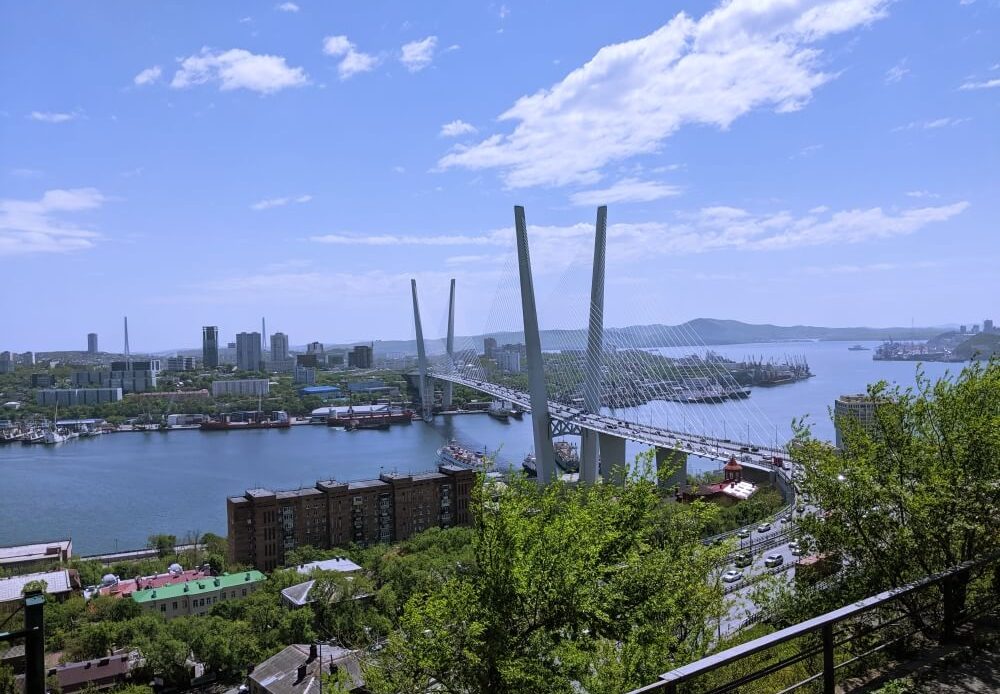
Vladivostok was a really pleasant surprise. Don’t get me wrong – I’d expected to like the city from all that I’d read about it but I was still surprised by how international, Asian and cosmopolitan the city feels – and just how enjoyable it was to simply walk around and discover on foot.
I visited Vladivostok as part of my Trans-Siberian itinerary. In fact, the city was the first stop on my three-week long journey. I know a lot of travellers forgo the furthest eastern reaches of Russia in favour of Beijing and/or Mongolia, but I feel that really means missing out on one of Russia’s most exciting and forward-looking cities.
The city has a very different feel compared to the Russian cities I’ve visited in Europe, which makes it deserving of a stop on any Trans-Siberian itinerary. Here are a few things that make Vladivostok so unique.
More on this trip: The Trans-Siberian in three weeks
4 reasons Vladivostok deserves a place on your Trans-Siberian itinerary
1. Vladivostok is the Russian San Francisco
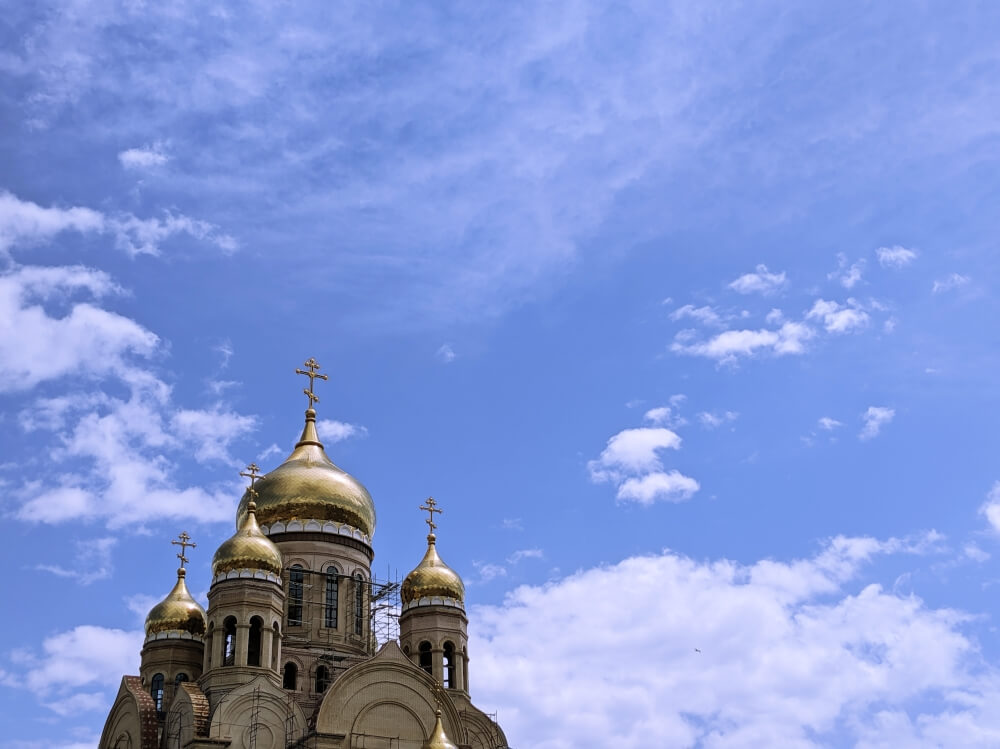
One thing you really can’t get away from in Vladivostok is the city’s proud link to San Francisco, and the constant comparisons its residents seem to love. I’m not entirely sure where it all started (I think it’s something a sitting US president remarked on when he visited back in the day) but it has to be said, there might be something in it. Let’s recap why. (FULL DISCLOSURE: I have never been to San Francisco.)
- Both cities are built on a tonne of hills. I imagine those in SF are a bit more extreme, but Vladivostok’s landscape is still pretty damn hilly (which is nothing short of remarkable in Russia tbh)
- Cable cars. Vladivostok only has one, but still…
- Landmark bridge. In the centre of Vladivostok you’ll find a gigantic bridge, which was opened in 2012 and has already become a symbol of the city. Its even called the Golden Bridge but this is just bit of a coincidence as the bridge spans the Golden Bay, which confusingly takes its name from Istanbul and not San Francisco.
- The coastal setting. This allows us to segway smoothly into…
2. The edge of Russia
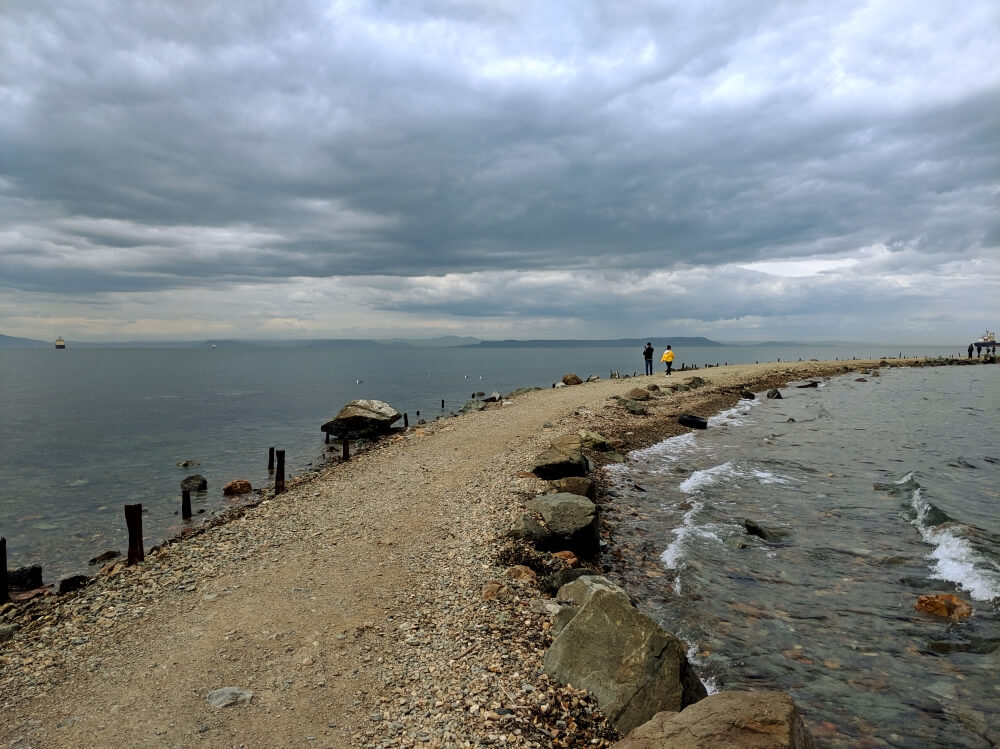
The Edge of Russia: dark clouds over Amur Bay
Another thing that makes Vladivostok feel quite unique (at least in my eyes) is its location on the coast. This isn’t entirely unique for Russia obviously – St. Petersburg is on the coast of the Gulf of Finland and Sochi is a famous seaside resort in the south – but Vladivostok really does make a lot of its setting; it has a yearly Mussel festival (which I just missed), seafood is very much everywhere (more on that later) and the symbol of the city is a lighthouse.
Vladivostok’s setting also makes it a genuinely lovely place to simply wander around – the air is fresh and it is home to a handful of small beaches. I started my journey here, but I could imagine it being a very relaxing end to a Trans-Siberian adventure.
3. East Asian influence
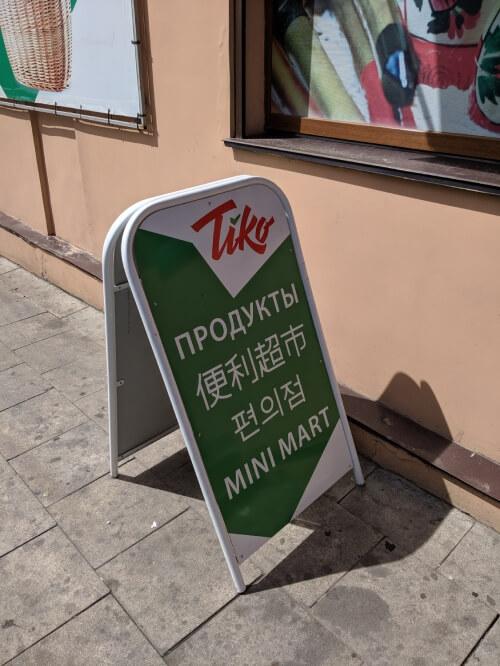
The cultural influence of Russia’s Eastern neighbours is clear in Vladivostok
Something I’ve always been curious of when thinking of Siberian or Far-Eastern Russia is how Asian is it really? The answer from doing my homework was: not very. Stalin’s paranoid fear of ethnic minorities meant many existing communities, i.e. Koreans, were dismantled, with its members being deported or shot, while architecture was deliberately kept very uniform and Soviet to keep in line with the rest of Russia. No real deviation of lifestyle from the rest of the country has ever really been encouraged here in the last 100 years.
However, I can confirm that these days, the influence of East Asia in Vladivostok is strong. The economic weight of Vladivostok’s closest neighbours (Korea, China and, to a lesser-extent, Japan) really make their presence known. These neighbours are all much closer than Moscow, meaning the city really knows where its bread is buttered: locals drive right-hand Japanese cars, Korean restaurants are in abundance and there were literally busloads of Chinese tourists exploring the sites. Any foreign language signage in the city was written in Russian, Korean, Chinese and then English.
4. Vladivostok has a bright future
There’s no doubt about it: Vladivostok is being transformed into a modern economic centre to explore Russia’s standing in Asia. The city has been the focus of a lot of investment in recent years: it hosted the APEC economic forum in 2012 (for which two huge bridges were built, greatly improving the infrastructure of the city), the capital of the Far-Eastern District government was moved here from Khabarovsk in 2018 and since 2017 visa-free entry to Vladivostok region has been trialled and since extended to other Eastern regions. It looks like Vladivostok has a very bright future ahead.
More on the Trans-Siberian Railway: What it’s like to plan the Trans-Siberian
Things to see and do in Vladivostok
Now that I’ve effortlessly convinced you to visit Vladivostok, here’s what you should see and do when you get there.
1. Ride the city funicular
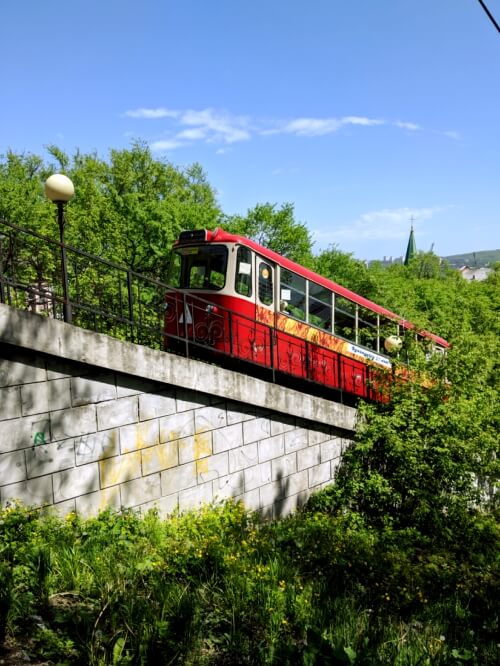
In a city with this many hills, a funicular is pretty-much mandatory. Vladivostok’s doesn’t traverse any huge distance (and is therefore not so practical) but it is charmingly retro. The journey takes all of 60 seconds and costs 12 roubles. It leads directly to the Golden Bridge viewpoint (see below). It is very satisfying to then get off and take a good photo or boomerang of the thing in motion.
2. Take a selfie at the Golden Bridge viewpoint

It me!
Take in the best view of the city’s new landmark bridge at the viewpoint, from where you can see across the city, the bay and to Russky Island. You can even experience the city’s many hills first-hand on your journey up here.
3. Zarya Center for Contemporary Art
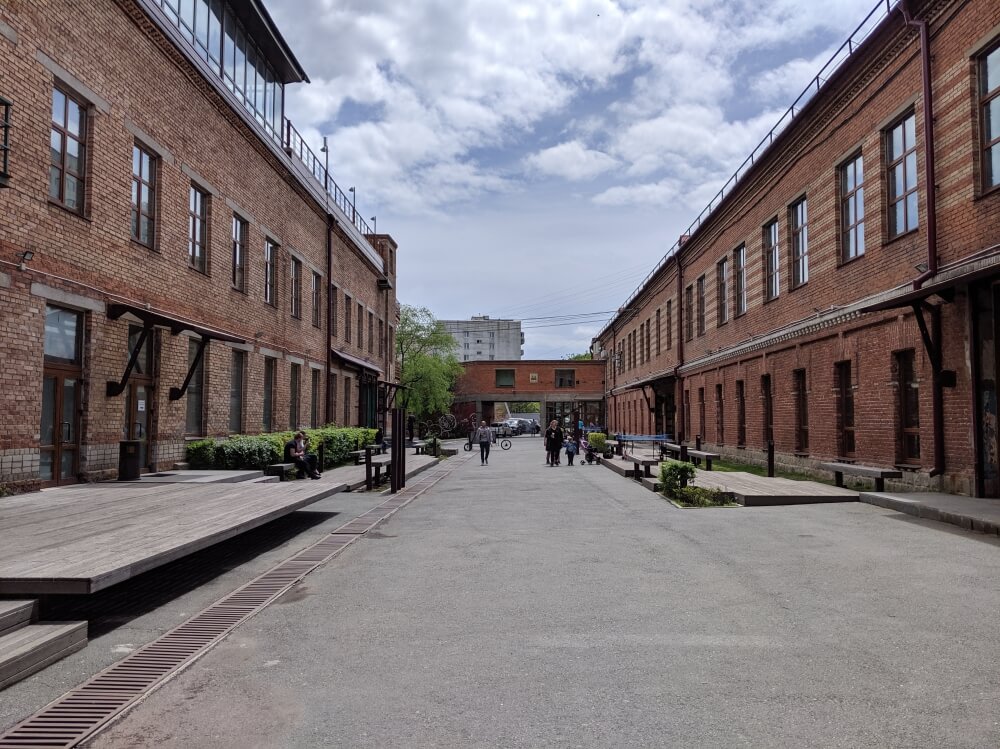
The Zarya Art Centre is located in a former factory
It’s clearly not just economic life that’s booming in Vladivostok, Zarya is proof that cultural (and hipster) life is too. This is a former clothing factory turned café-cum-art space-cum-co-working space. The café is lovely and there was a great exhibition on when I went which explored the different areas around the Vladivostok region, which was really interesting.
Zarya is well-worth a visit, but it’s not located in the centre of the city. You can easily get there on public transport in an hour I’m told, but traffic seemed a bit of a nightmare in the city so I opted for a Yandex taxi, which took me there in 30 mins and cost only 235 roubles/€3. To make the most of getting there, make sure to stay for food in the café (they do a lovely eggs benedict for brunch).
4. Make the most of the city’s seafront
Vladivostok has a nice chilled seafront. Head to Sportivnaya and Yubileynaya for some ‘beach-side’ bars and food kiosks. This seaside strip is also great for a morning run.
5. See the Tokarevskiy Lighthouse (simply known as ‘Mayak’)
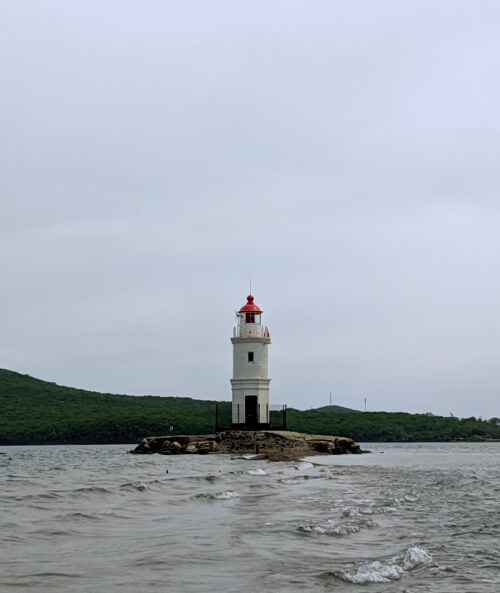
This lighthouse is proudly touted as the symbol of the city and what better a symbol for a coastal city than a lighthouse? It was a bit of a trek to visit, so I took a taxi from Zarya all the way there (around 40 mins for 265 roubles/€3.70).
In terms of scale, think Copenhagen’s Little Mermaid statue. In terms of disappointment, also think of Copenhagen’s Little Mermaid statue. It is TINY.
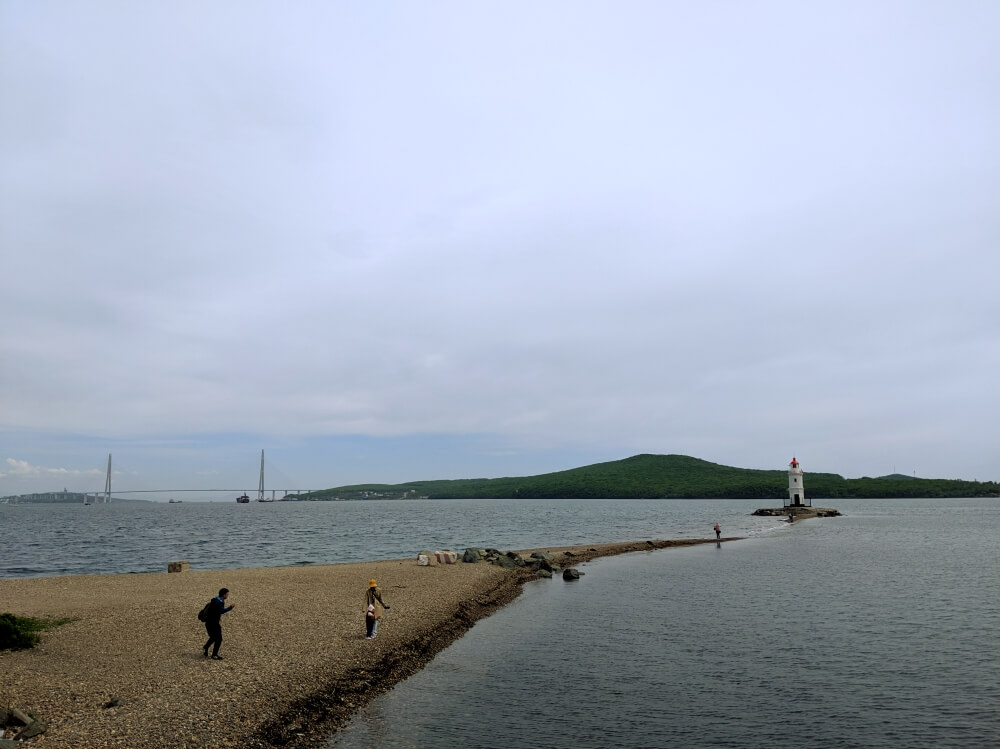
The lighthouse in perspective
But I’d say it’s still well-worth a trip out there for the views – here you can see the surrounding islands, the Russky Island bridge and the hilly, mountainous landscape of the region. You get a great feeling of the fresh sea air, and you really do feel like you could be standing on the very edge of Russia. There are two cafes next to spot, Crabhouse and Octopus Café, the latte of which does a great Caesar salad with prawns.
More on Russia: Why now is the perfect time to visit Russia
Local dishes and where to eat in Vladivostok
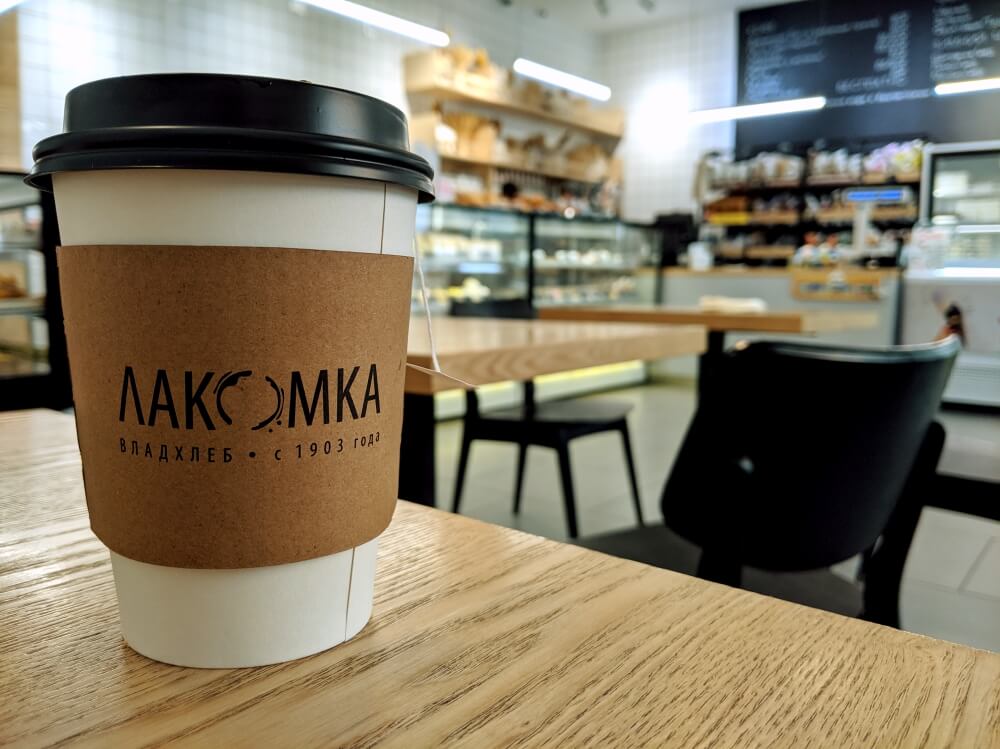
Lakomka bakery chain in Vladivostok
Vladivostok food is another aspect of life here that is clearly influenced by its regional neighbours, particularly Korea. Expect lots of Korean food and restaurants.
There were two things I really wanted to try in Vladivostok, and I am disappointed to report that I didn’t eat either. For more local tastes, check out this article from RBTH.
Kamchatka crab – I love crab and during my research, I saw some great photos of beautiful crabs dished out (the Kamchatka crab is something of a local delicacy) however, it turns out these crabs are absolutely massive and so it really just wasn’t practical (cost or appetite-wise) for a lone diner.
Pyan-se – Now I didn’t find these in Vladivostok, but I did stumble across one in Moscow on the last day of my journey (#FullCircle). This might have been a bit more poetic had I not absolutely hated it and thrown most of it away. Pyan-se are Korean-style steamed buns, filled with onions, cabbage, meat and more cabbage. I can only assume the fact they are hard to find in Vladivostok is because everyone realised how awful they are.
In Vladivostok, I did still have some good food: I had some great calamari and prawn-cheese balls at art/music pub Cat and Clover (the interior of which looks like an Irish pub met a huge Alice Cooper fan – a lot of themes going on at once here) and I had a great breakfast and tea at Lakomka, a lovely local chain of bakeries that is well-worth checking out. They have a great selection of sweet pastries and even more cakes. This one on ul. Sventlanskaya is very central.
Where to stay in Vladivostok
I stayed at the Izba Hostel, which came recommended by Lonely Planet. I would second this recommendation – dorm rooms are a bit crowded but beds are comfortable, with light, plug socket and privacy curtain. The toilets and showers are maybe a bit out-dated but they are clean and the showers are nice and blisteringly hot. There’s a big kitchen and open common-room space. The location here is fantastic – really central to everything.
A taxi from the airport cost 1500 (€21) but would probably be less via Yandex Taxi. I ordered a transfer via the hostel, but they clearly forgot to book it.
Vladivostok on your Trans-Siberian itinerary: top tips
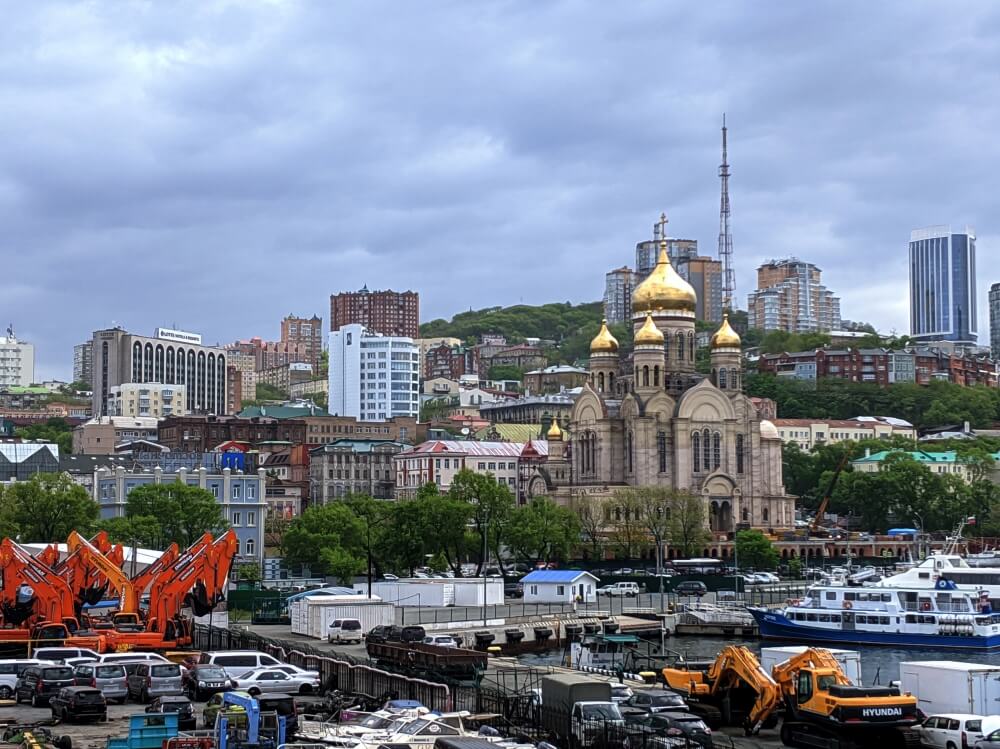
The hills of Vladivostok
- Taxi to the city centre from the airport costs 1500 roubles (€21). I’d say this is a decent price for what is actually a very long journey.
- If you’re starting your Trans-Siberian journey here, you can pick up a Russian SIM card at the airport. Beeline have great plans including unlimited data.
- Yandex Taxi is a very easy and cheap way to get around the city – especially to Zarya and the lighthouse. If you only have limited time in the city, make sure to download the app as it’s a great option to minimise transit times.
- Lenin spotting: Lenin is located just opposite the main train station.
- The pedestrian bridge at the train station leading to the platforms has a great view of the new church against a backdrop of hills.
More for your Trans-Siberian itinerary
Heading West:
23 hours in Ulan-Ude
Visiting Lake Baikal in the off-season
Hiking the Great Baikal Trail


We work with the Far East Economic forum every year, so I am hoping that it will give me an opportunity to visit one day. Without that though… still not sold on the more remote parts of my homeland 🙂
Haha, challenge accepted! I have a lot more posts to get through before I’m done with this journey. Let’s see if I can change your mind…